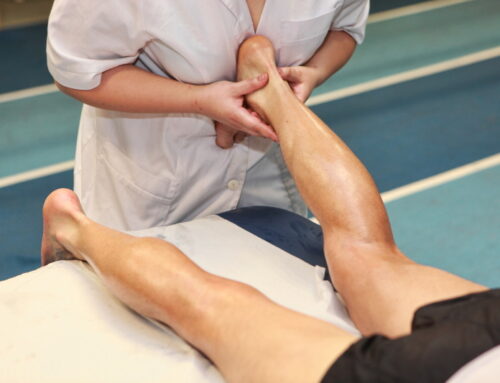Once you have sprained your ankle, you’re at risk for chronic ankle instability. It’s because the ankle is a very complex joint that has to go through a wide arc of movement in all directions, and after a sprain the ligaments remain weak.
Ligament injuries rarely heal completely; unlike muscles, which have a terrific blood supply and heal quickly. Even once the pain resolves, the ligaments are never as strong as they were before the injury, and as their job is to stabilise the joints, a ligament injury produces a loose joint.
An injured ligament doesn’t entirely regenerate or return to its original form, instead it heals or knits together at a longer length to what it was prior being injured. The result is a weaker more lax ligament which if repeatedly injured over time can lead to chronic ankle instability.
Forever Weakened Ankles
Because the biomechanics of the ankle are so complicated, instability after incomplete rehabilitation is quite common. The symptoms include a feeling of ‘giving way’ of the outer (lateral) side of the ankle; swelling and pain, and recurrent sprains. The ‘giving way’ occurs when you’re walking or active, but can also happen if you’re just standing, and the ability to balance normally is affected.
Proper rehabilitation is needed to strengthen the muscles around the ankle and “retrain” the tissues within the ankle that affect balance. If you don’t take steps to treat ankle instability, not only are you at risk for lots more ankle sprains, but also the development of degenerative arthritis.
Without physiotherapy treatment, you will undoubtedly suffer repeated ankle sprains, causing and perpetuating more instability- it only gets worse!
How Physiotherapy improves Chronic Ankle Instability
Physiotherapy is the cornerstone of the effective treatment of chronic ankle instability. At Portobello Physiotherapy Clinic, they will design a program involving treatments and exercises to strengthen the ankle, improve balance and range of motion, and retrain your muscles.
Active rehabilitation is really the mainstay of treatment for this condition, and leads to permanent improvement in about 80% of cases. Your physiotherapy treatment will involve soft tissue massage, range of motion exercises, peroneal muscle strengthening and proprioceptive retraining. (‘Proprioception’ means your sense of balance).
The treatment goals are to increase support around your ankle joint; improve your balance to help you avoid any more sprains, and to protect the shape and normal function of the foot.
Proprioception improvement will increase your awareness of the position of your foot while it’s bearing weight, and will also build strength- a wobble-board may be used for exercises.
You physiotherapist will also focus on training and strengthening the lateral peroneus muscles, and the medial muscles, in order to maintain the balance of forces acting on your ankle. It’s important to do this to help compensate for the lax ligaments and keep the joint stable.
Bracing or taping: Some patients wear an ankle brace or tape up their ankle when active to gain support for the ankle and keep it from turning. Bracing also helps prevent additional ankle sprains. However, there’s no substitute for training and strengthening the muscles around the ankle so you don’t have to rely on tape for support.
Medications. Nonsteroidal anti-inflammatory drugs (NSAIDs), such as ibuprofen, may be prescribed to reduce pain and inflammation.
In severe cases you may have to consider surgery, depending on to what degree the ligaments have been damaged; stretched or completely torn.
If you have suffered an ankle sprain and want to guard against future problems, call Portobello Physiotherapy Clinic on 01 476 3330.







